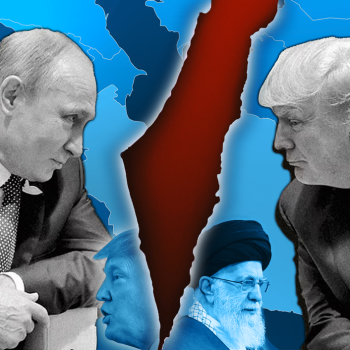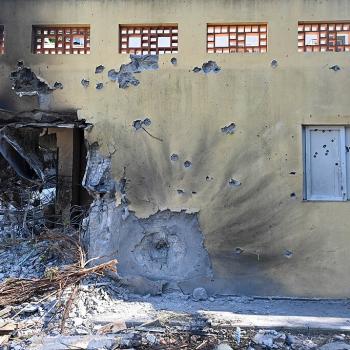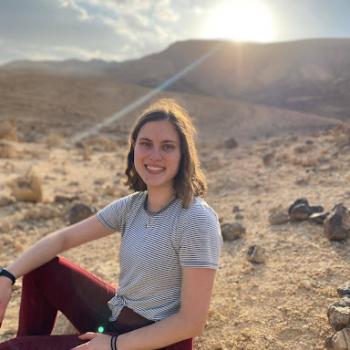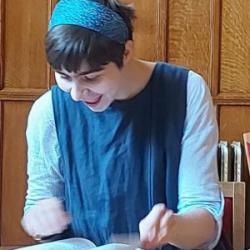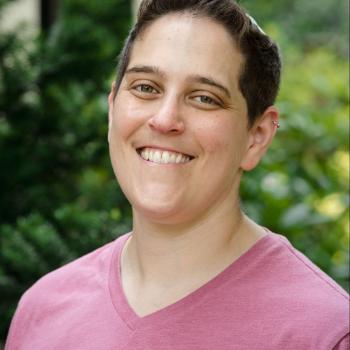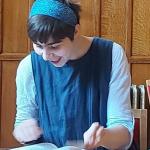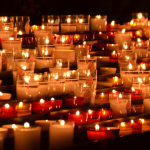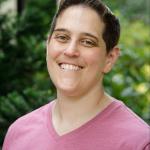By Rabbi Daniel Klein, Hebrew College Rabbinical School ’10
Parashat Terumah Exdodus 25:1-27:19
As we move through these unfolding uncertain and challenging times, our locations in the annual Torah reading and holiday cycles offer powerful and complementary guidance for how we might respond.
With Parashat Terumah this week, we begin a series of parshiyot on the building of the mishkan, the portable tabernacle in the wilderness. It is reasonable to read this section of the Torah as a continuation of the revelation experience at Mt. Sinai, the mishkan becoming a means of re-accessing God’s presence as the people wander through the wilderness.
However, there is an ancient rabbinic interpretive tradition of understanding this section of the Torah to be written out of order. In this school of thought and interpretation, the mishkan instructions are received after the incident of the Golden Calf (Tanhuma, Teruma 8) and are a response to the Golden Calf.
How so?
When the people are at Sinai and Moses has disappeared into the cloud with God, the people fear they are alone, adrift, leaderless. They crave something to worship that will give them a sense of security. They give their gold jewelry to Aaron, Moses’ brother, who throws it into the fire and amazingly it turns into a golden calf. This mysterious human creation, made of their most precious materials, becomes a grotesque object of worship. The story is thus a meditation on the response to instability with the people making an idol of their own human cravings in their wild, desperate need for comfort.
In the midrash’s re-ordered Torah, the mishkan becomes God’s response to this understandable desire expressed in a debased fashion:
וְעָשׂוּ לִי מִקְדָּשׁ וְשָׁכַנְתִּי בְּתוֹכָם
Let them make Me a sanctuary so I may dwell among them (Exodus 25:8).
The mishkan is a precise structure, designed and built methodically by inspired, specialized craftspeople. The layout is of one of nested sacredness, with the holiest part at the center, hidden from view. This center is pure gold, but in contrast to the Golden Calf, it is an empty space, framed by two angels that sit above the ark of the covenant, from which God speaks to the people. As we will learn in the Book of Leviticus, human behavior to encounter the Divine in the mishkan is also highly regimented. God is approached through very specific, highly regulated types of sacrifices offered at particular times of day and year and in response to certain behaviors and experiences.
Intriguingly and powerfully, the substance of this Divine abode that facilitates human-Divine interaction is the very same material that builds the Golden Calf, the people’s gold and other precious possessions. Moreover, the Israelites donate these goods freely and abundantly, with a hint of the same wild desperation as they gave for the Golden Calf. In fact, their generosity is so excessive and overwhelming, they must be instructed to stop giving (Exodus 36:3-7). The Israelites have not been transformed and reformed by the Golden Calf incident and its aftermath.
However, the mishkan offers a different manner of responding to our uncertain condition than the distorted excesses of the Golden Calf. Its construction, along with the regulations for inhabiting it, balances structure and creativity, discipline and freedom. This delicate calibration is meant to orient human desires towards sacred ends and facilitate our closeness with God through a restrained, patient, guided process.
With Rosh Chodesh Adar this Friday and Saturday and the beginning of our preparations for Purim, we are invited into Shushan and the realm of Ahasuerus. In this world, there is no solid ground, and anything can happen – queens can be deposed, commoners can become royalty, lotteries seem to dictate destiny. One of the central verses, when Esther and Mordechai are discussing her role as queen in this scary and chaotic world, begins, “mi yodea? Who knows?” (Esther 4:14). It may well be, Mordechai says to her, that she has become queen precisely to deal with this situation, but who can say? Purim is a scary world of not knowing, where God is not present in a revealed form, and yet we need to live and take action.
What are the responses to such circumstances? In a mixed-up world where we too may become disoriented, the mitzvot of Purim offer us guidance:
- Read Megillat Esther and tell this story together.
- Send mishloach manot, food gifts to each other.
- Give matanot lievyonim, charity to the needy.
- Have a festive meal.
The faith coursing through Purim that cannot be shaken by our encounter with chaos is in each other. We find the comforting stability of God’s presence in our commitment to care for and be in community with other people. Fittingly, in fulfilling these mitzvot, the rabbis understood Purim as the holiday on which we fully affirm our commitment to live according to the Torah (Talmud Bavli, Shabbat 88a). This teaching reveals the wonderfully complementary nature of the mishkan and Purim. In the face of uncertainty and fear, we need the mishkan’s patient, disciplined harnessing of our passions to serve the ever-evolving reality of Life, which we call God. And we need Purim’s insistence on relationship with and responsibility for each other.
Rabbi Daniel Klein is Dean of the Rabbinical School of Hebrew College in Newton, MA. He was ordained by Hebrew College in 2010 and previously served as Dean of Students and Director of Admissions & Student Life.




